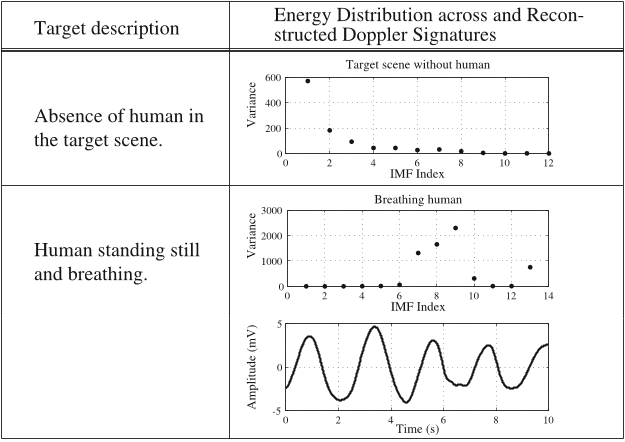




Did you find this useful? Give us your feedback











142 citations
78 citations
...2415736 wall radar human detection to extract the human micro-Doppler signal [4]....
[...]
71 citations
...The theory of micro-Doppler recovery based on empirical mode decomposition was first introduced in [47] and further developed in [48]....
[...]
...This was not performed during the short-range detection in [48]....
[...]
...The raw data were processed using EMD and Hilbert transform as described in [48]....
[...]
...In this paper, we extend the work of [48] by showing experimental results for different stand-off distances....
[...]
...14, where experimental results from another paper from our group [48] are compared....
[...]
50 citations
...Even when they have no gross motion, a person exhibits small motions, such as the rise and fall of the chest due to breathing, and the resulting -DSs are distinct and can be detected behind walls [11]....
[...]
44 citations
756 citations
...Simple systems proposed in [2, 7, 9] for the detection of human Doppler utilize time domain, frequency domain [9], and spectrogram based approaches [7, 10]....
[...]
311 citations
300 citations
...Doppler-radar models for human walking based on well known models of human locomotion used in computer animation are presented in [8, 22]....
[...]
...that are characteristic of human activity [7, 8]....
[...]
...Non-stationary models for Doppler due to walking human targets were proposed in [8, 14]....
[...]
162 citations
124 citations